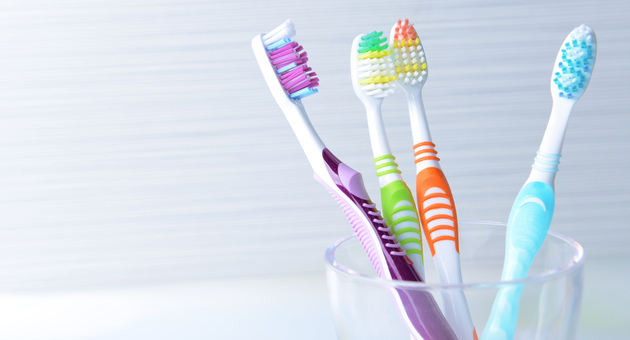As is rightly believed, oral hygiene promises a healthy and a happier body. Several oral hygiene products are available in the market, but choosing a particular product keeps the buyer in a state of dilemma. Of all such products, a toothbrush is a primary tool used for maintaining good oral hygiene and preventing oral diseases. With a number of toothbrush designs (different size, length, hardness, and type of bristles), deciding which one to buy can be confusing.
So here are the answers to a few common questions that can help you pick a toothbrush for yourself:
1 . Size
Make sure the toothbrush head has an easy access to certain hard-to-reach areas, such as back and side of the molars. Generally, a toothbrush with head dimensions 1’’ long and ½’’ wide, and those with a long handle and easy grip, is preferred.
2 . Bristles
Of the varieties available in the market (hard, medium, soft, and extra-soft), a soft-bristled toothbrush is the most preferred option. Dentists also recommend soft-bristle toothbrushes instead of hard ones, because when combined with vigorous brushing, medium- or hard-bristled toothbrushes often lead to increased enamel damage and gum irritation. In addition, rounded bristles compared to flat-out bristles with sharp ends are preferred, as they allow optimal plaque removal from the teeth and around the gums.
3 . What To Choose, Angled Bristles Or Straight Bristles
Although several bristle designs fail to show the superiority of a particular bristle type for plaque removal, some studies show that toothbrushes with angled bristles show better plaque removal and prevent gum loss when compared to standard straight bristles.
4 . What To Choose, Manual Or Electric Toothbrushes?
Powered toothbrushes are becoming popular as they make brushing easier and are equally effective than manual toothbrushes if used properly. Additionally, studies comparing the efficacy of manual toothbrushes with powered toothbrushes have reported better performance of rotating oscillating electric toothbrushes in the reducing plaque and gum disease.
5 . When To Change a Toothbrush?
A discolored toothbrush with frayed or missing bristles is ineffective in removing plaque and debris from the teeth. So, a toothbrush should be changed in every 3 to 4 months. Also, toothbrushes should always be replaced following a cold or flu to avoid re-exposure to bacteria or viruses.
Things To Keep In Mind
-Toothbrushes should be thoroughly rinsed after every use
-Avoid immediate covering of the toothbrush after brushing to prevent the growth of bacteria. Let the bristles dry first
-Always cover the toothbrush head, if multiple toothbrushes are stored in the same holder.
-If one is dealing with an oral disease, it is advisable to soak a toothbrush in an antibacterial mouthwash after brushing to reduce the bacterial build up on the toothbrush
Choosing a good toothbrush is not a difficult thing provided one knows how to do it. Breathe Fresh, Stay healthy!
